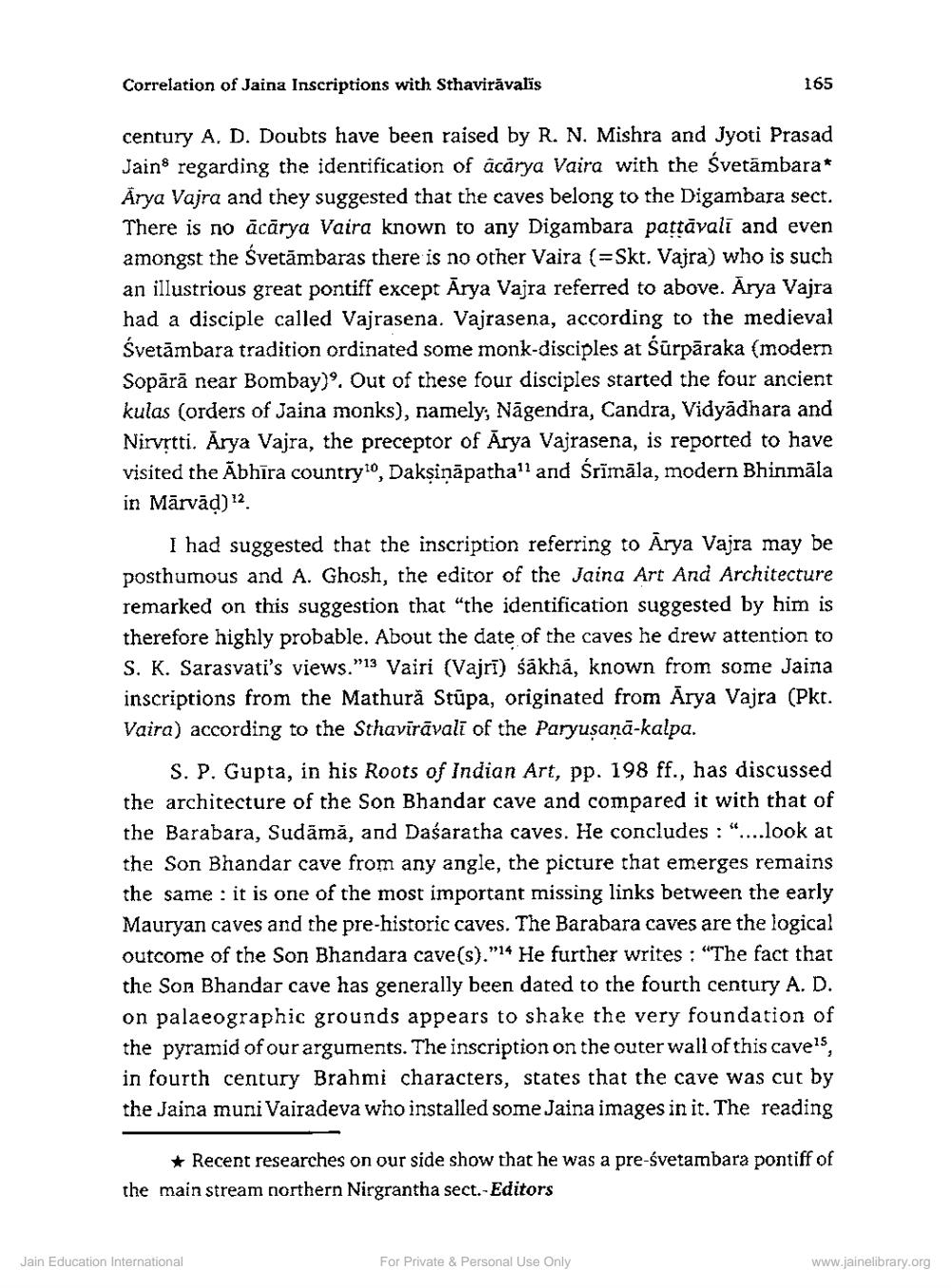Book Title: Correlation of Jaina Inscriptions with Sthaviravalis Author(s): U P Shah Publisher: Z_Nirgranth_Aetihasik_Lekh_Samucchay_Part_1_002105.pdf and Nirgranth_Aetihasik_Lekh_Samucchay_Part_2 View full book textPage 3
________________ Correlation of Jaina Inscriptions with Sthaviravalis century A. D. Doubts have been raised by R. N. Mishra and Jyoti Prasad Jains regarding the identification of acarya Vaira with the Svetämbara* Arya Vajra and they suggested that the caves belong to the Digambara sect. There is no ācārya Vaira known to any Digambara paṭṭāvalī and even amongst the Svetambaras there is no other Vaira (=Skt. Vajra) who is such an illustrious great pontiff except Arya Vajra referred to above. Ārya Vajra had a disciple called Vajrasena. Vajrasena, according to the medieval Śvetāmbara tradition ordinated some monk-disciples at Śūrpāraka (modern Sopārā near Bombay)". Out of these four disciples started the four ancient kulas (orders of Jaina monks), namely; Nagendra, Candra, Vidyadhara and Nirvṛtti. Arya Vajra, the preceptor of Arya Vajrasena, is reported to have visited the Abhira country10, Dakṣinapatha11 and Śrīmāla, modern Bhinmala in Mārvāḍ)12 165 I had suggested that the inscription referring to Arya Vajra may be posthumous and A. Ghosh, the editor of the Jaina Art And Architecture remarked on this suggestion that "the identification suggested by him is therefore highly probable. About the date of the caves he drew attention to S. K. Sarasvati's views."13 Vairi (Vajrī) śākhā, known from some Jaina inscriptions from the Mathură Stupa, originated from Ārya Vajra (Pkt. Vaira) according to the Sthavīrāvalī of the Paryuṣaṇā-kalpa. S. P. Gupta, in his Roots of Indian Art, pp. 198 ff., has discussed the architecture of the Son Bhandar cave and compared it with that of the Barabara, Sudāmā, and Dasaratha caves. He concludes: "....look at the Son Bhandar cave from any angle, the picture that emerges remains the same it is one of the most important missing links between the early Mauryan caves and the pre-historic caves. The Barabara caves are the logical outcome of the Son Bhandara cave(s)." He further writes: "The fact that the Son Bhandar cave has generally been dated to the fourth century A. D. on palaeographic grounds appears to shake the very foundation of the pyramid of our arguments. The inscription on the outer wall of this cave's, in fourth century Brahmi characters, states that the cave was cut by the Jaina muni Vairadeva who installed some Jaina images in it. The reading ★ Recent researches on our side show that he was a pre-svetambara pontiff of the main stream northern Nirgrantha sect.-Editors Jain Education International For Private & Personal Use Only www.jainelibrary.orgPage Navigation
1 2 3 4 5 6 7 8 9 10 11 12 13 14 15 16
